Mention “Africa”, and most people will think of untamed safaris, impoverished children or grim gunmen. My impression of Africa was exactly like most people until I actually decided to set foot in this continent.

And how much has my perception of the region changed! This astonishingly diverse region continues to amaze me with its remarkable wildlife, breathtaking landscapes and fascinating remnants of ancient culture. It is also actually easy to travel around the area, as long as you take the necessary precautions, be vigilant, and avoid travelling at night. With every subsequent visit to Africa, I become increasing eager to uncover the many secrets that this continent has been hiding.
Pre-trip Preparations
My 3-week trip encompassed a tour of South Africa, Lesotho, Zambia, Zimbabwe and Botswana. While this will be my third trip to Africa, I always feel that I have not explored enough of the continent. Furthermore, I prefer to spend more time at a few destinations than rush through many countries in a single itinerary. As such, I had to regretfully drop Swaziland from my travel plans.
From Singapore, South Africa is the main gateway into the region, with direct flights to Johannesburg and Cape Town via Singapore Airlines and South African Airways. I managed to get a deal on Skyscanner – a S$700 two-way flight via Qatar Airways, bought during one of the airline’s sale periods three months prior to my actual trip! This is significantly cheaper than an ordinary Singapore Airlines flight to South Africa, which would have cost twice as much.
South Africa
As the second largest economy in Africa, South Africa has three capital cities – Cape Town as the legislative capital, Pretoria as the Seat of the President and Cabinet, and Bloemfontein as the administrative capital.
Also read: 5 Reasons to Visit Cape Town in 2017
Pretoria
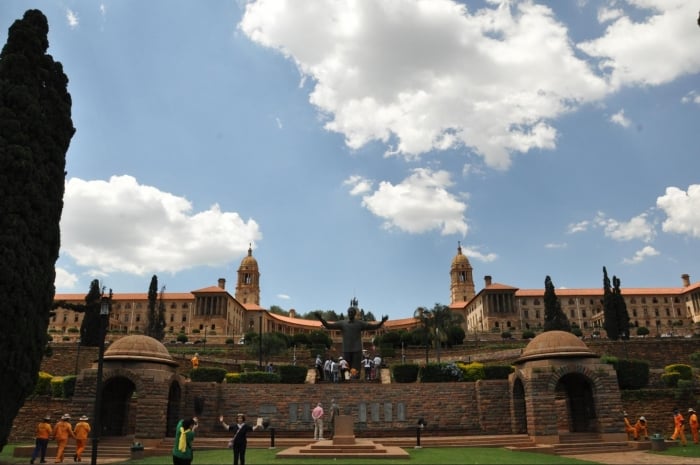 Union buildings in Pretoria
Union buildings in Pretoria
I started my journey in Pretoria, which feels like a more compact version of sprawling Johannesburg. The Union buildings in Pretoria are the highlight of the city, along with the impressive statue of the legendary Nelson Mandela.
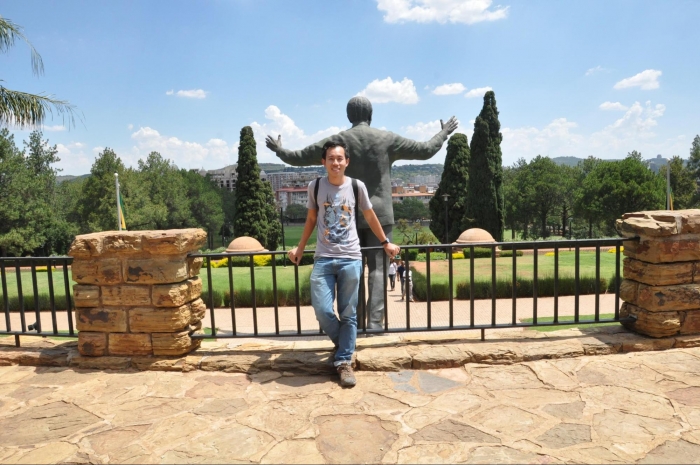
From Pretoria, I took the high-speed train, known as the Gautrain, to Johannesburg. Contrary to popular belief, South Africa is highly developed, with railways such as the Gautrain linking cities together. My trip on board the Gautrain, which also links the country’s main international airport to Johannesburg and Pretoria, took a mere 40 minutes.
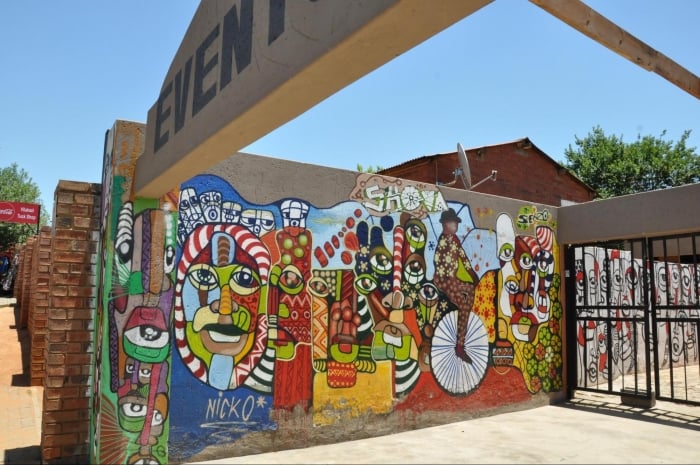 Artwork along Vilakazi street, Soweto
Artwork along Vilakazi street, Soweto
Johannesburg
In Johannesburg, I did the most recommended thing for travellers to do there – hop on a Soweto (southwest township) tour! This tour brings you to the numerous famous landmarks in the city, such as the Baragwanath Precinct, the Hector Pietersen Museum and the Mandela House Museum.
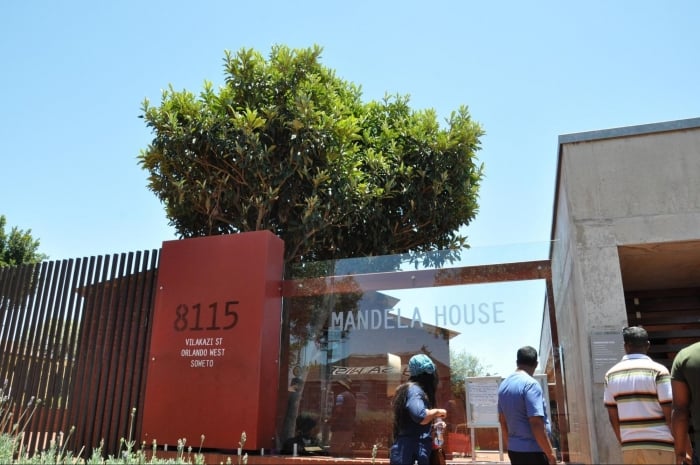 Nelson Mandela house attracts a steady stream of tourists everyday.
Nelson Mandela house attracts a steady stream of tourists everyday.
As part of the tour, I walked down Vilakazi Street, where the renowned Archbishop Desmond Tutu stays. This street is also remarkable for being the only street in the world that has produced two Nobel Peace Prize winners (Nelson Mandela & Desmond Tutu).
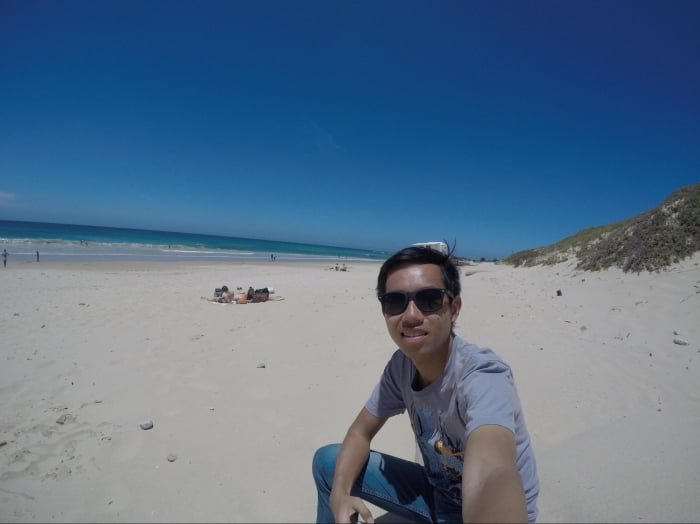 The amazing beach at Port Elizabeth with soft powdery sand and clear blue skies.
The amazing beach at Port Elizabeth with soft powdery sand and clear blue skies.
Port Elizabeth
After my stay in Johannesburg, I headed south to Port Elizabeth, a coastal city which draws crowds of visitors in the summer with its pristine beaches. The cheapest (and most convenient) way to get to Port Elizabeth from Johannesburg is to take a 15-hour bus ride, which can range from S$35–45 depending on the bus company. I took a ride on an Africa People Mover (APM) bus, which cost S$35.
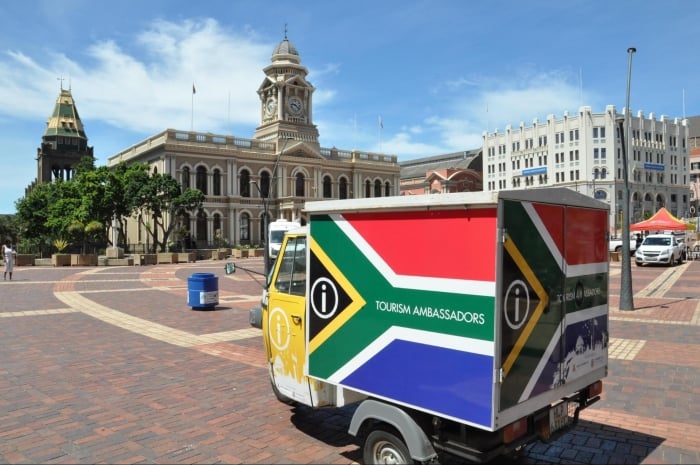 The city hall with traces of British colonial architecture.
The city hall with traces of British colonial architecture.
With colonial architecture, quaint streets, and beautiful beaches, Port Elizabeth is perfect to stroll around and soak in the scenery. You might want to take advantage of the local transportation options available in the city, however. Minivans (also known as combis) ply the beach avenue and the railway/bus station. Each ride only costs $1 regardless of distance travelled!
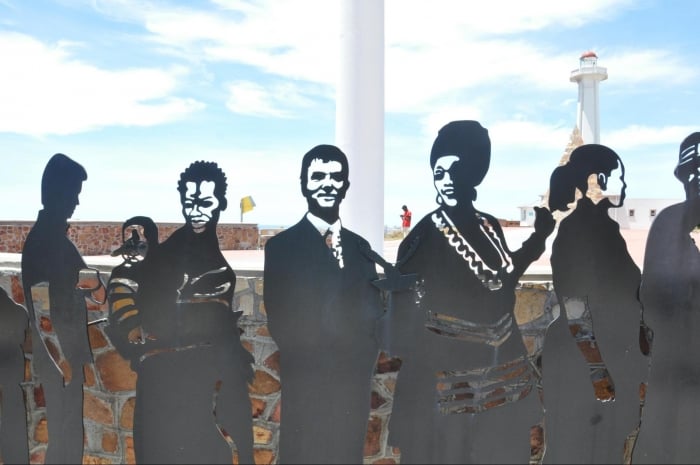 Artwork around Donkin Square to commemorate the first time people went to the polls.
Artwork around Donkin Square to commemorate the first time people went to the polls.
Besides scenic attractions, Port Elizabeth also offers a variety of activities from visiting Addo Elephant Park to diving in the Indian Ocean. Being the adventurous sort, I was determined to try every single activity available, and took the chance to surf down the Alexandria Coastal Dune, the largest sand dune in South Africa!
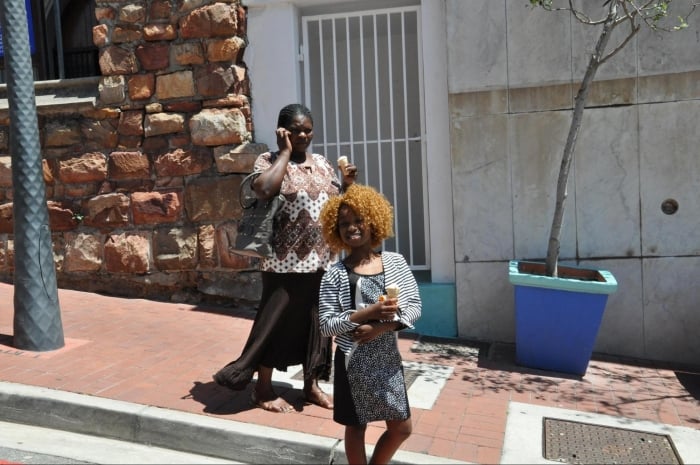 A child on the street posing.
A child on the street posing.
After spending a week in South Africa, I took an overnight bus ride (costs S$40) to Bloemfontein, and then crossed the border to Lesotho.
Lesotho
Also known as the Kingdom in the Sky, Lesotho is the only independent state in the world that lies at least 1000km above sea level! The country mostly consists of high mountain ranges, carved out eons ago by rivers. During winter, abundant snow falls on these mountains, which become popular destinations for travellers in the region to ski or snowboard in.
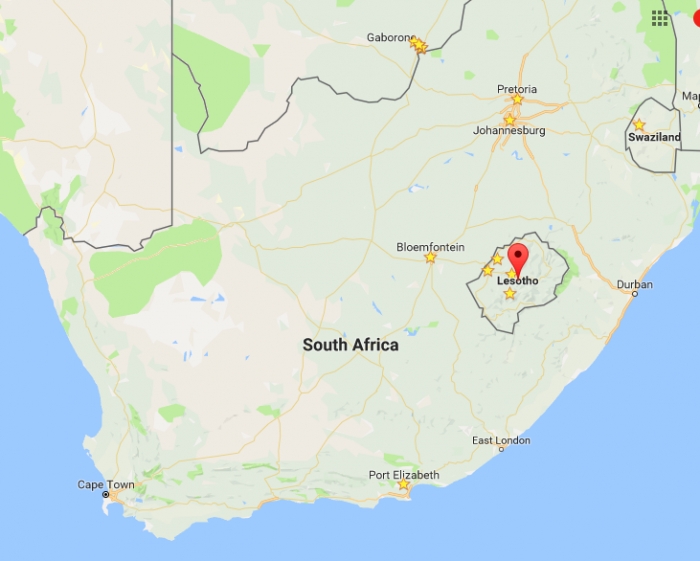 As you can see from the map, Lesotho is surrounded on all sides by South Africa
As you can see from the map, Lesotho is surrounded on all sides by South Africa
With its unique geological location (surrounded by South Africa), travelling to Lesotho from South Africa is extremely convenient. Furthermore, the Lesotho lothi can be used interchangeably with the South African rand as they are of the same value.
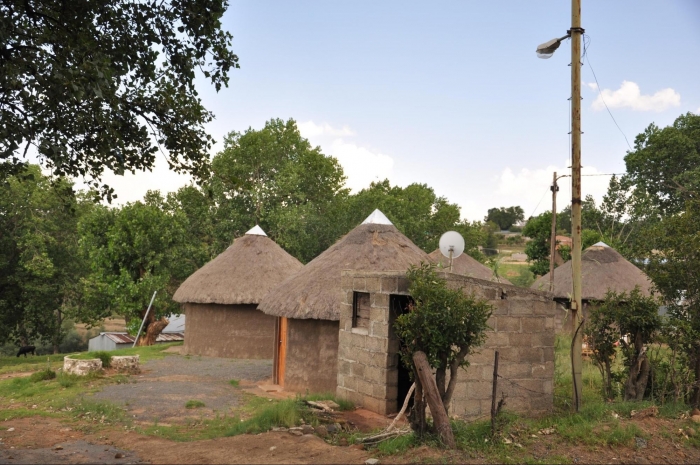 Traditional Basotho hut
Traditional Basotho hut
My time in Lesotho was brief, but I managed to visit the picturesque Mohale Dam and spend a night in a traditional Basotho hut.
Maletsunyane Falls and Semonkong
I wrapped up my travels through Lesotho with a trip to the highest single drop waterfalls in the region, Maletsunyane Falls. The area around the waterfalls is known as Semonkong – The Place Of Smoke. Semonkong derives its namesake from the haze created when the water from the waterfalls plummets 186 metres into a spectacular gorge! I thoroughly enjoyed my stay at the lodge near Maletsunyane Falls. With the rugged waterfalls at the background and verdant greenery all around, I could finally experience living alongside nature at its purest form.
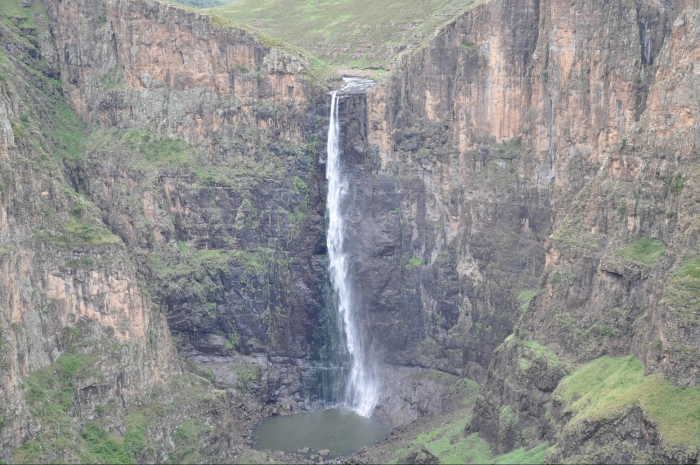 Maletsunyane Falls, largest single-drop waterfalls in Africa.
Maletsunyane Falls, largest single-drop waterfalls in Africa.
I originally wanted to head to Harare, the capital of Zimbabwe, from Lesotho to meet a friend of mine living there. Unfortunately, due to time constraints, I headed straight to Victoria Falls on the border of Zimbabwe instead.
Zimbabwe
While it still struggles with numerous economic and political issues, Zimbabwe is, in my opinion, a place of outstanding natural beauty and wonder. The country also feels safe for tourists and backpackers alike, with very friendly locals eager to assist you in any way possible. I was promptly and enthusiastically given directions to the nearby train station upon my arrival in Bulawayo, the second largest city in Zimbabwe.
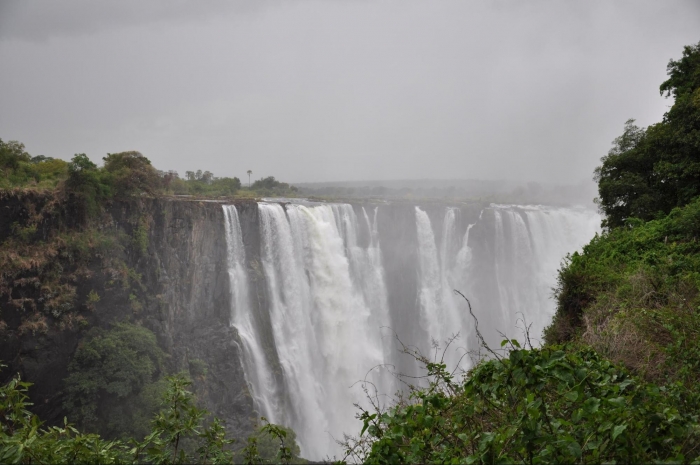 Victoria Falls from Zimbabwean side.
Victoria Falls from Zimbabwean side.
Zimbabwe’s most famous attraction is the Victoria Falls, a UNESCO World Heritage Site. This waterfall is the only waterfall in the world with a length of more than 1km and a height of more than 100m! As one of the largest waterfalls in the world, Victoria Falls is also considered one of the seven natural wonders of the world.
To get to Victoria Falls, I had to take the overnight train from Bulawayo to the town sharing the same name as the waterfall. I spent around S$10 for a four-bunk private compartment on the 15-hr train ride. The train was old, with Victorian style furnishings, and I did not expect my journey to be comfortable. Fortunately, I was able to catch a few hours of sleep on the train itself!
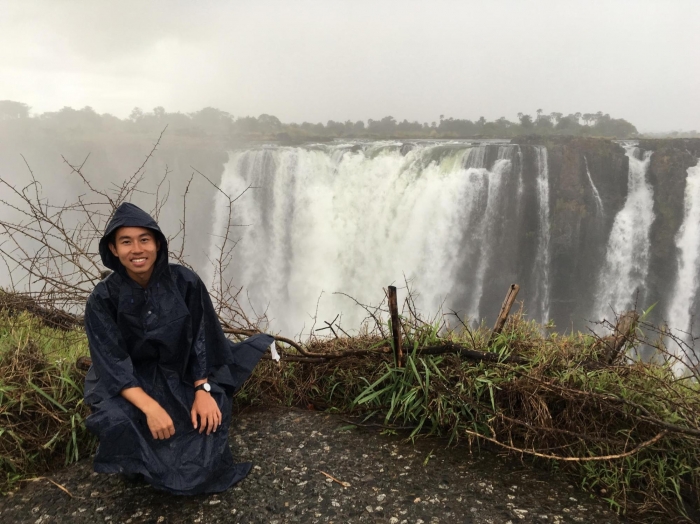 Getting drenched in the rain is no fun.
Getting drenched in the rain is no fun.
From the town of Victoria Falls, I had to take a taxi to the waterfall, which cost approximately S$5–7. There is also an entrance fee to the waterfall itself, which costs approximately S$30.
Unfortunately, it rained heavily during my visit to Victoria Falls, but that did not stop me from considering the myriad of adventure activities being offered. These included whitewater rafting ($120) and bungee jumping ($150). I had originally planned to do the bungee jump, but changed my mind in the end instead. Appreciating the view at the top was good enough!
Zambia
After checking out the Zimbabwean side of the falls, I crossed over to Zambia to view Victoria Falls from the other side. I have always made it a point to do so for all waterfalls that are shared between two countries, such as Iguazu Falls in South America.
My first stop in Zambia was the corresponding town next to Victoria Falls on the Zambian side, known as Livingstone. The town is named after David Livingstone, the British explorer who was the first European to explore the area.
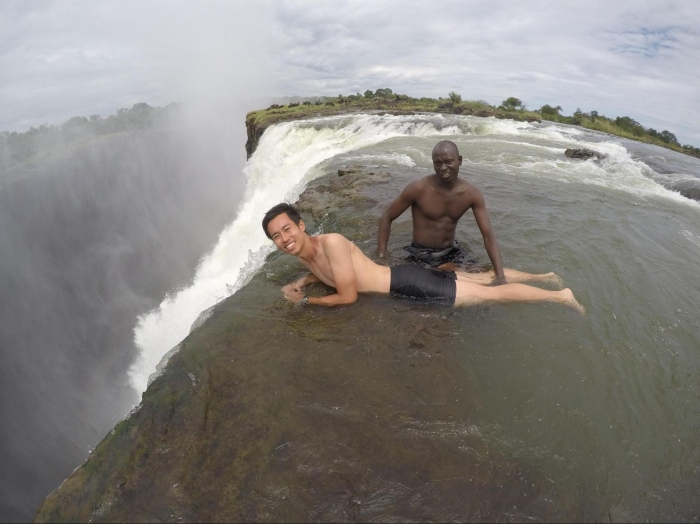 Swimming at the top of Devil’s pool, Victoria Falls.
Swimming at the top of Devil’s pool, Victoria Falls.
The Zambian side of the waterfall felt more magnificent to me, and I spent more time there than I did on the Zimbabwean side. The most memorable thing I did there was to swim in Devil’s Pool, a rock pool formed right on the very edge of the falls itself! There are two ways to get to the pool: the first was to take a speedboat to the Livingstone Island and then to the pool ($140). The second was to enter the normal entrance of the Victoria Falls National Park and then take a 30-minute hike to the pool ($85). I chose the latter as it was more economical and there was transport from my hostel to the park.
Safari Tours From Livingstone
Besides Victoria Falls, Livingstone also offers various safari tours. Back in South Africa, I decided to skip the safari tour at the famous Kruger National Park as it was too pricey. Additionally, it was difficult to visit the park without my own vehicle as public transport to the park is unavailable.
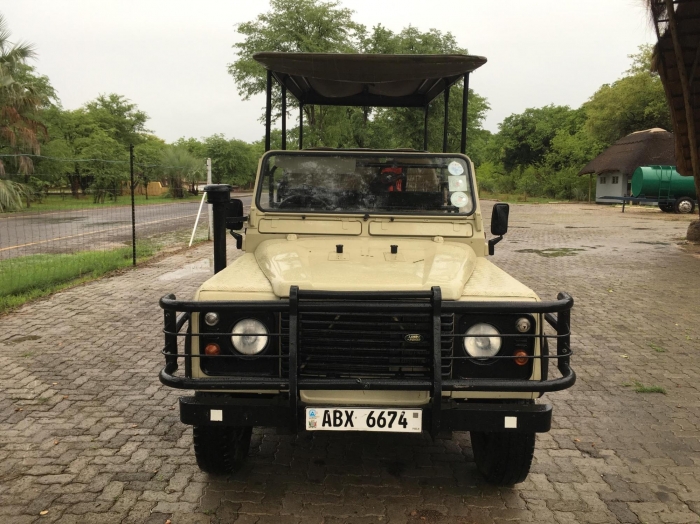 The 4WD that brought us on our safari tour.
The 4WD that brought us on our safari tour.
In Livingstone, I signed up for a half-day safari tour at Mosi-oa-Tunya National Park with some new friends from the hostel for a bargained price of $50! Driving through the safari on a four-wheel-drive was already exciting, but the tour got more memorable when we spotted white rhinos! These rare animals are unfortunately close to extinction as they are continuously poached for their horns which are believed to have medicinal value.
I learnt that even though there are park rangers guarding the park all the time, poachers always find ways to hunt the rhinos without getting caught. There was a poaching syndicate who arrived in the middle of the night by helicopter and swiftly removed the horns of a few rhinos before escaping! It is so painful to learn that our selfish human demands have caused such beautiful animals to become so endangered.
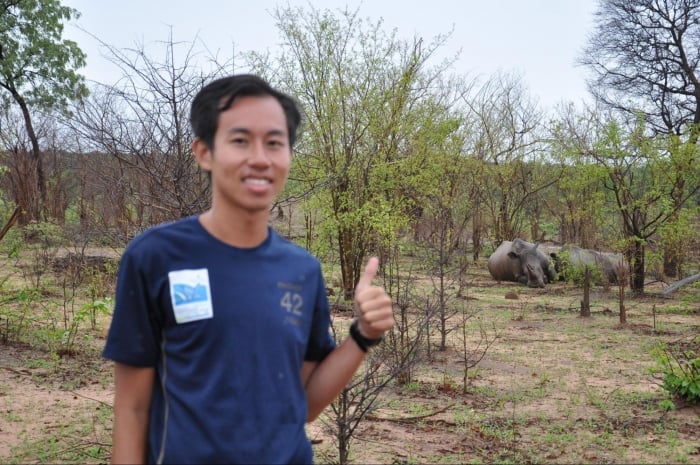 Up close with the endangered white rhinos and there were armed guards standing close to us for our protection.
Up close with the endangered white rhinos and there were armed guards standing close to us for our protection.
Botswana
The last place of my Africa sojourn was Botswana, one of the top ten most peaceful countries in the world. I was surprised to learn that Botswana achieved a perfect score in the domestic and international conflict category, alongside other countries such as Mauritius, Switzerland, Chile, and Uruguay! This country is a testament to how peace and stability can thrive in a continent infamous for its political strife and war.
I entered northern Botswana via the famed “Four Corners” region, an area near Victoria Falls where Botswana, Zambia, Zimbabwe and Namibia almost meet! My first stop in the country was the northernmost Botswanan town of Kasane, which also sits at the edge of Chobe National Park. This national park is famous for housing some of the world’s largest herds of elephants. As Kasane is easily accessible from Victoria Falls, many tour operators in Zimbabwe and Zambia would offer safari trips to Chobe National Park.
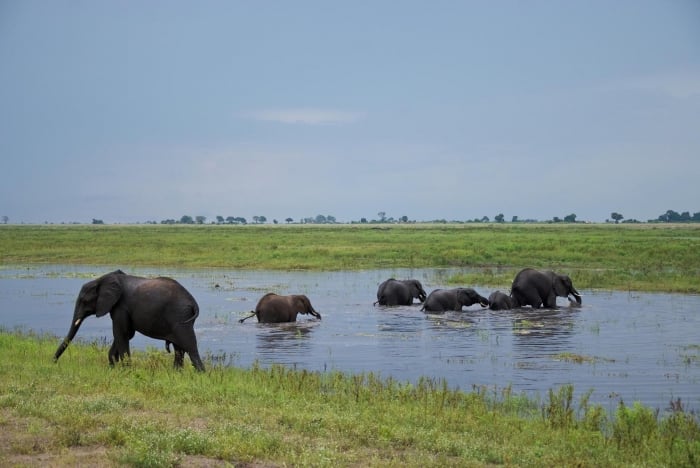 Elephant spotting at Chobe National Park.
Elephant spotting at Chobe National Park.
A Boat Ride down Okavango Delta
West of Chobe National Park lies the Okavango Delta, one of the largest inland deltas in the world. This delta is one of Africa’s last remaining great wildlife habitats and a refuge for a massive variety of wildlife. I wanted to spend a night at one of the safari camps deep in the delta, but these are usually priced from S$500 onwards! I chose to stay in Maun, the town nearest to the delta, instead.
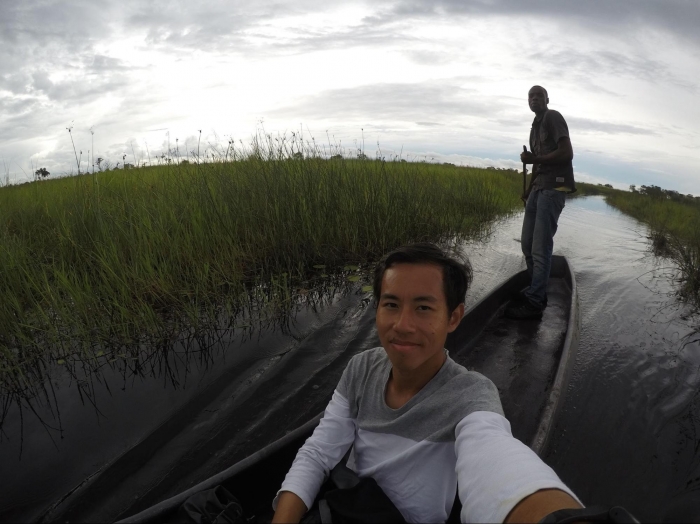 Spending a tranquil day out in the Okavango delta.
Spending a tranquil day out in the Okavango delta.
In Maun, I signed up with a pair of Finnish and Turkish backpackers for a full-day tour to the Okavango delta in a mokoro. A traditional dug-out canoe, the mokoro is used as a form of transport in the delta. We paid S$36 per person, which included park conservation fees, a compulsory guide and a peddler for our mokoro.
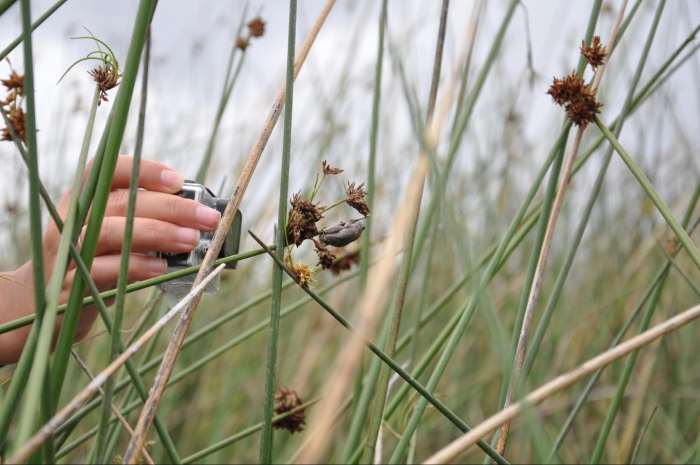 Frog hiding among the reeds on our mokoro tour.
Frog hiding among the reeds on our mokoro tour.
The tour through the Okavango Delta was extremely surreal. Surrounded by tall reeds, I felt truly at peace with nature. There were times when our boat peddler would tell us to stand, and spot the animals hiding among the greenery. Unfortunately, as it was the rainy season, we were unable to spot many of the wildlife. This was because they had sufficient water deep in the delta and were contented with hiding deeper in the foliage.
Nonetheless, I had fun during the tour and even tried my hand at peddling a mokoro! I found the canoe difficult to steer as only one pole is used to move the boat. Amazingly, the locals had already mastered the art of rowing with it!
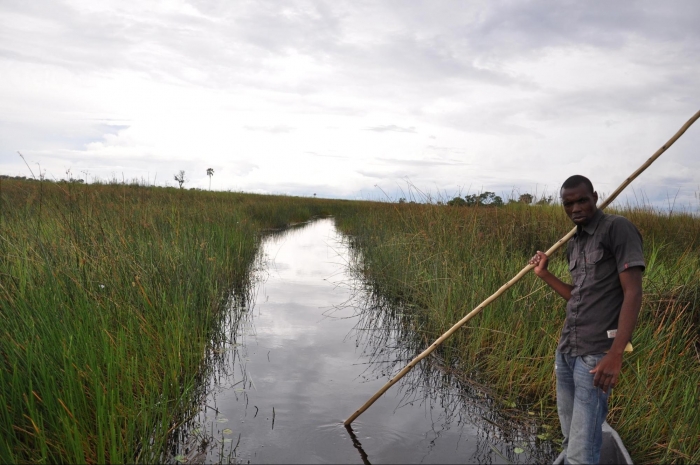 My friendly mokoro peddler.
My friendly mokoro peddler.
I ended my Southern African journey in the Botswanan capital of Gaborone, which had towering skyscrapers similar to Singapore. It was finally time to return to Singapore, something which I did with a heavy heart.
My takeaway
My trip around Southern Africa was extremely enjoyable. Besides the friends I made along the way, I was always kept in awe by the local wildlife and wide range of beautiful scenery. Interestingly, I encountered no language barriers in my travels, as almost everyone I met spoke perfect English. The locals were very friendly and largely curious why a lone Singaporean guy (me) would be travelling in Africa. They were also extremely helpful and advised me to watch my belongings when travelling around the big cities. This was a far cry from my pre-trip impressions of Africa, and I am extremely glad that I took the courage to set foot on this continent.
My trips to Africa do not end here! There are still so many places in Africa to visit: West Africa to hone my French speaking skills or Mt Kilimanjaro in East Africa to climb!. The possibilities in Africa are endless indeed!
Also read: How to Travel Luxuriously in Africa for 11 Days Under SGD 2000
Summary of expenses for a 21-day trip to Southern Africa
| Category | Price (in SGD) |
| Flight tickets | $703 |
| Transport tickets (intercity buses, metro) | $450 |
| Food | $180 |
| Activities (park entrance fees, safaris, swimming at Devil’s pool) | $300 |
| Accommodation (hostels in Semonkong, Victoria Falls, Livingstone)* | $200 |
| Miscellaneous (SIM card, souvenirs) | $120 |
| Total | $1953 |
*In other places, I used Couchsurfing




